A fermented shoyu or soy sauce-like condiment made from Pheasant back mushroom. It's a great place to use woody trim or tough mushrooms.
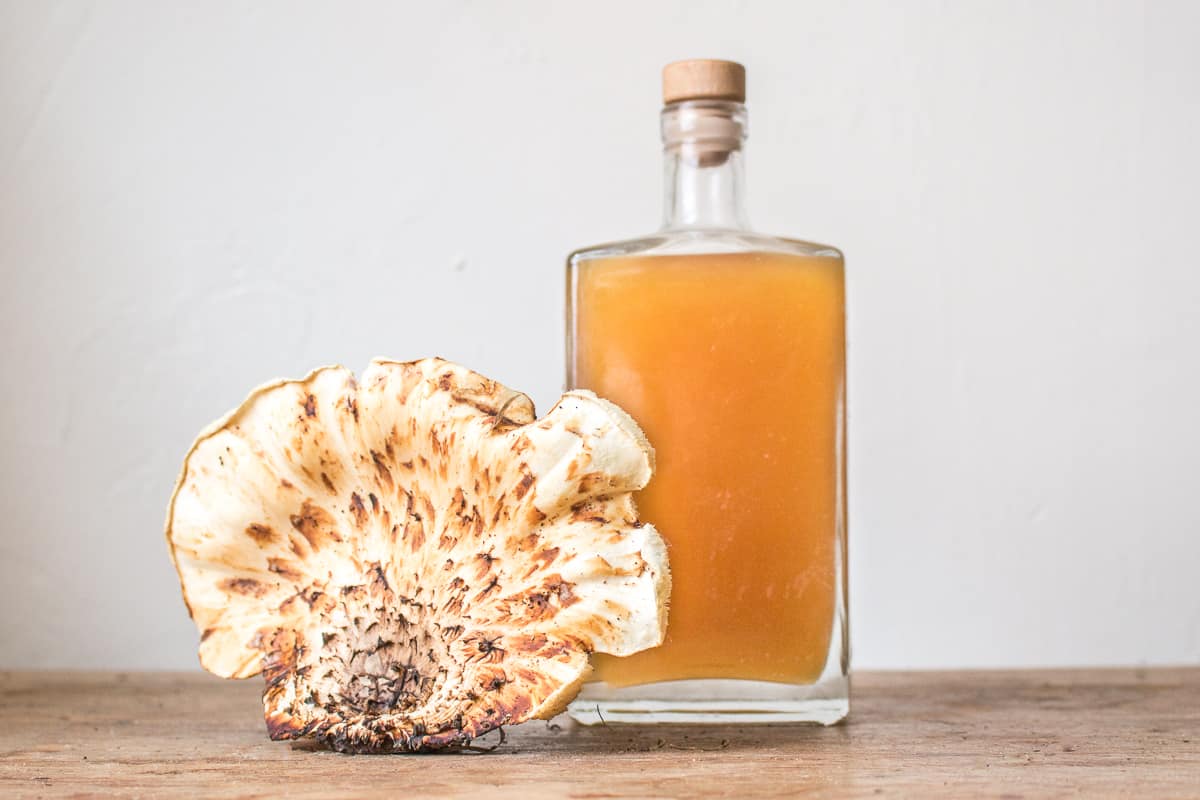
Prime pheasant back / dryad saddle season is usually about over after the spring chicken of the woods pop, but just because they’re big and tough as nails doesn’t mean you can’t do anything with them, and pheasant back shoyu is a great example, especially if you like edible science projects.
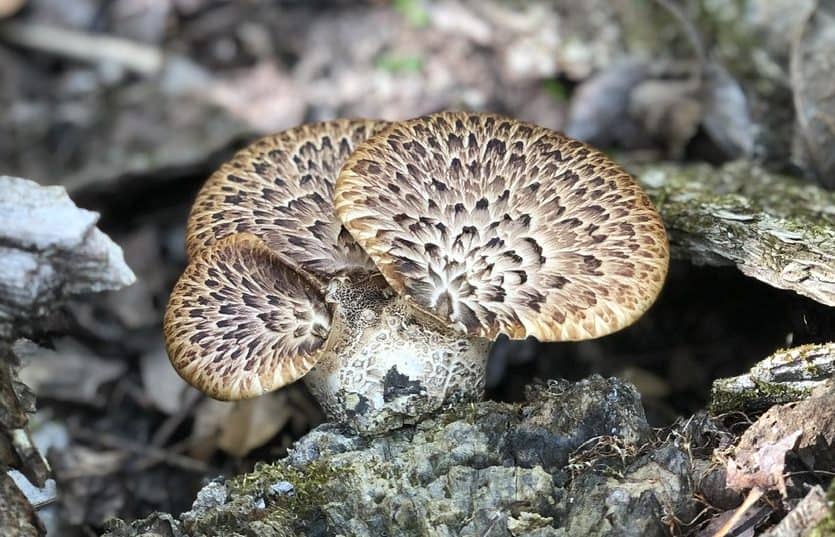
Shoyu and it’s cousin tamari (soy sauces made from soy and soy mixed with wheat, respectively) aren’t traditionally made from mushrooms, but when you look at fun condiments like traditional mushroom ketchup, they’re really not that different.
Both are salty, umami-rich sauces, just made from different things. My pheasant back shoyu here is an adaptation of the ground breaking one described in The Noma Guide to Fermentation, a great book I’ve referenced a number of times.
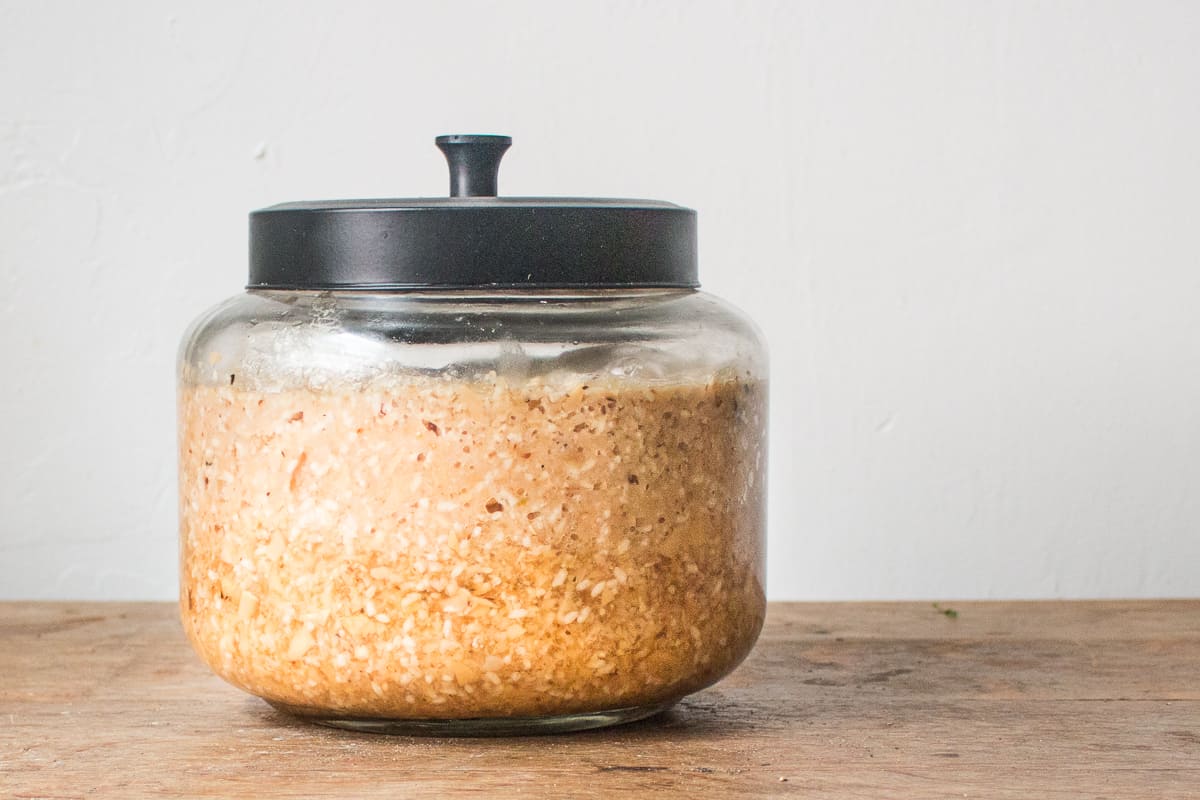
In a nutshell, you take some pheasant backs of any age (and toughness) grind them into a meal, mix them with salt, water, and koji rice that you can inoculate with Aspergillus oryzae yourself or buy online, put it in a jar, and wait—that’s it.
It’s ingenious, and the perfect sort of project to have in your back pocket if you like fermentation, or if you keep striking out on chickens and keep running into pheasant backs a little too old to slice and cook as-is, like I've been doing this week.
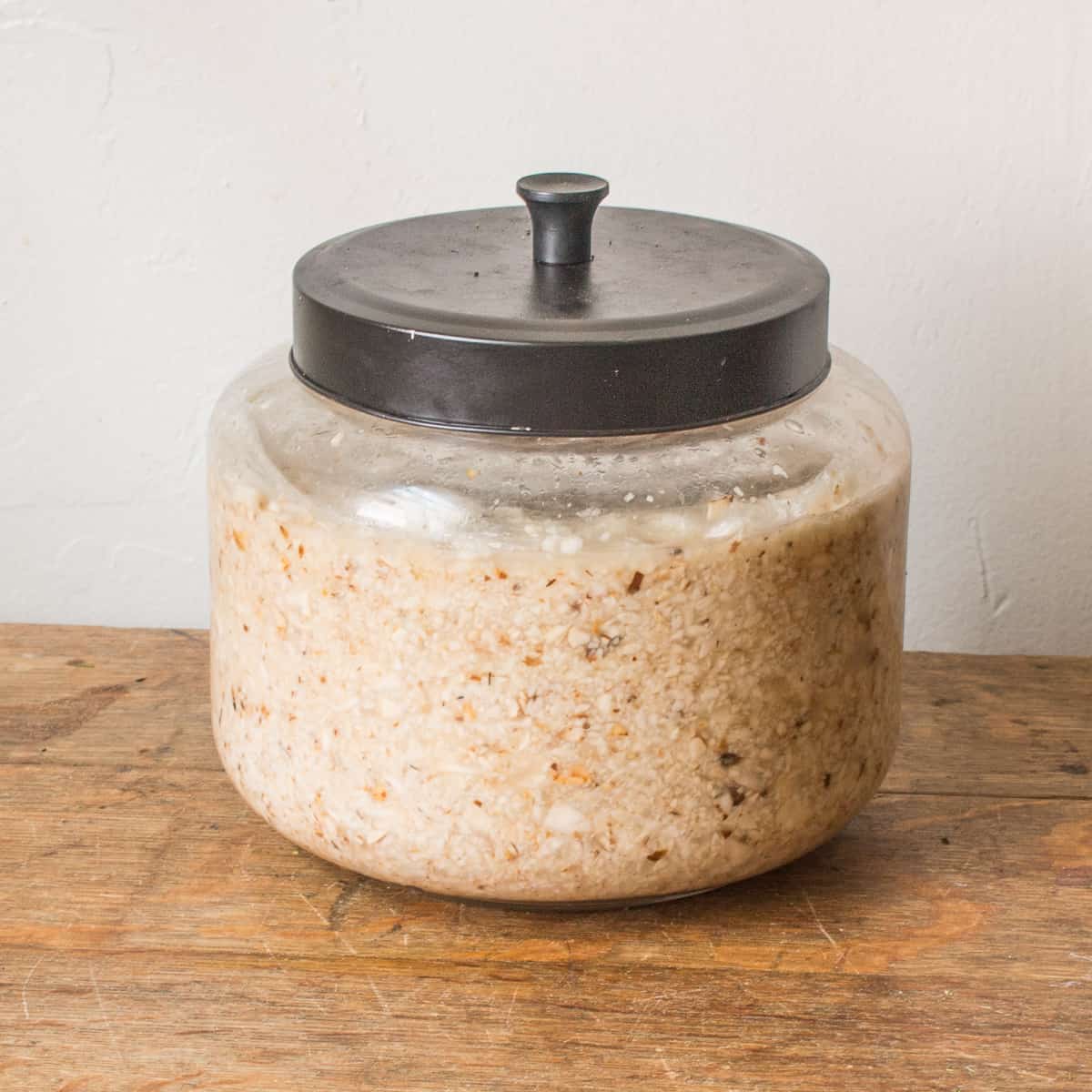
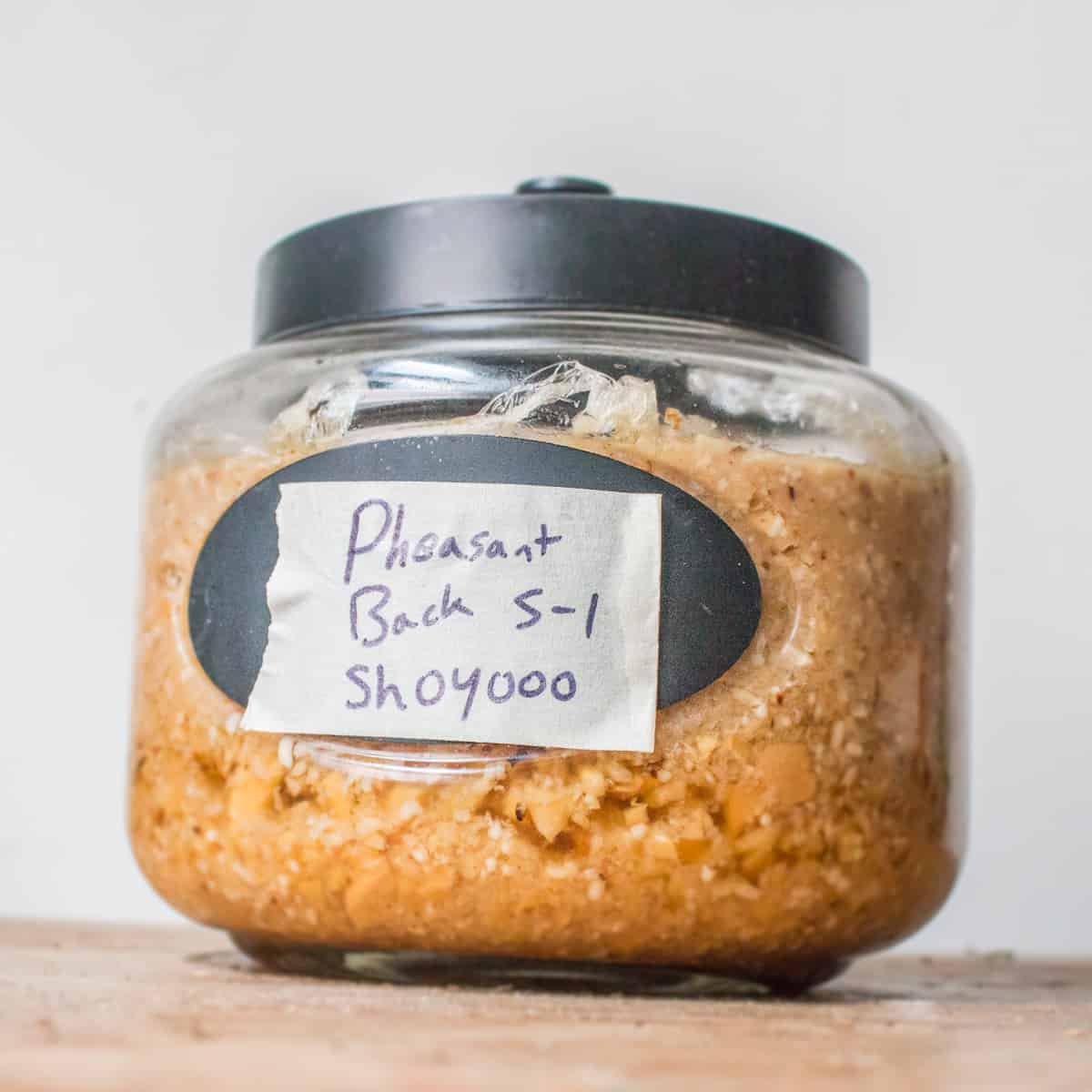
After a month you extract the nectar from the mushroom-rice slurry, bottle and store. The finished product tastes eerily of the farinaceous, cucumbery quality pheasant backs are known for, but with a funky kick only fermentation can give.
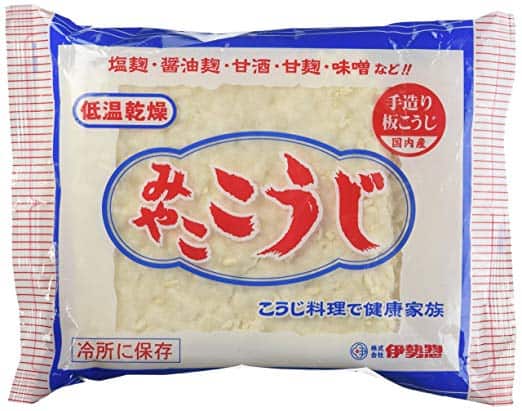
Koji fermentation is white hot right now, and I’m admittedly an amateur as I don’t inoculate my own like my friend and fellow chef, Koji Guru Jeremy Umansky, (author of the new book Koji Alchemy).
But, thanks to e-commerce, I don’t need to rig up an inoculation chamber at home, and neither do you. Packs of pre-inoculated koji rice will only run you a couple bucks, and can be used for lots of different things besides making fermented mushroom condiments, like the quick dry-aged meat hack, shio-koji marinades, and others.
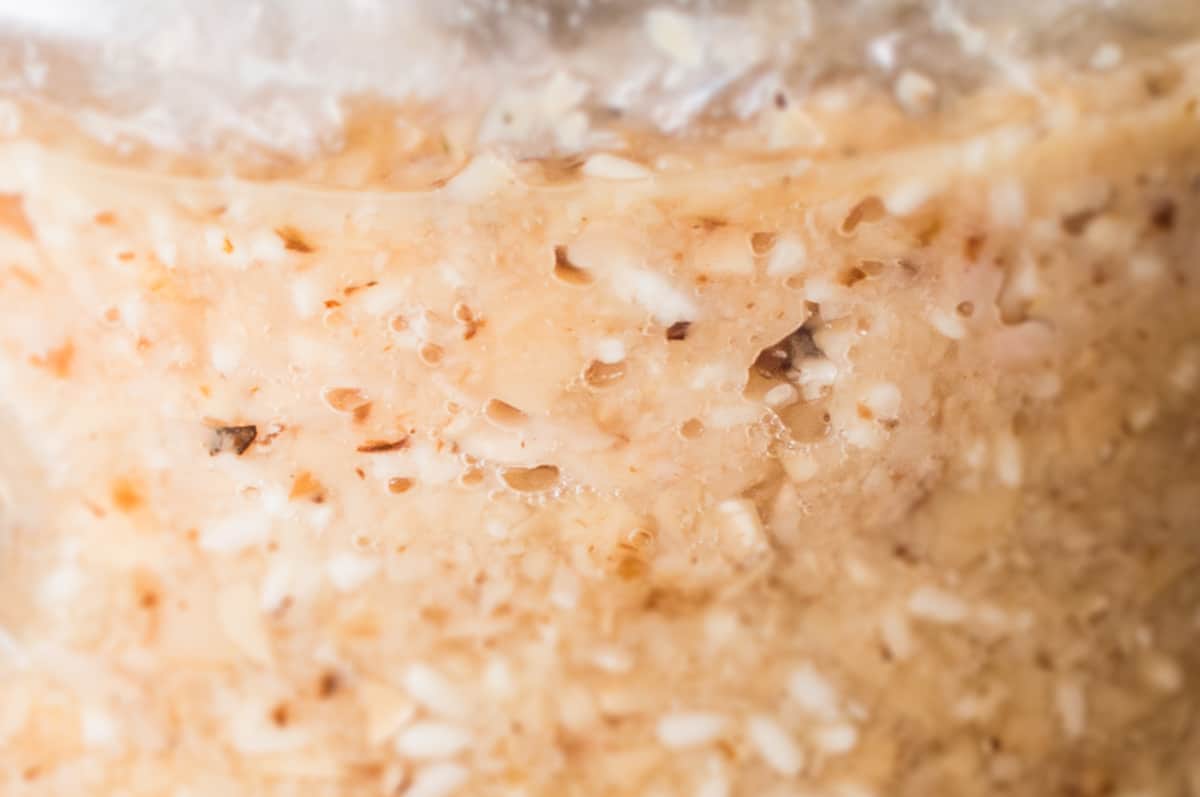
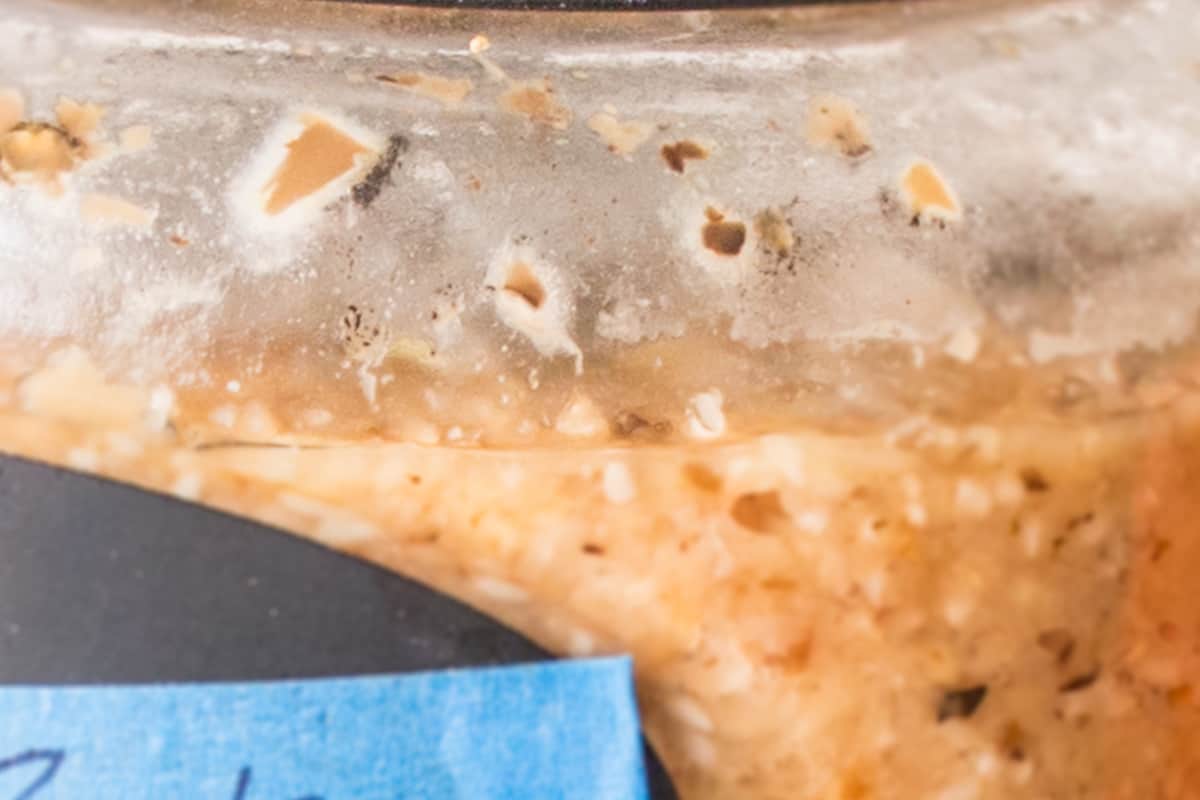
As an avid fermentor, one thing that fascinates me about the process here is that the sauce shows vigorous fermentation even though the salt content is a whopping 25% of the total water added to the starting product, something you just won't see with Lactobasilii that are harnessed to make things like sauerkraut, kosher dills, etc, at least from my experience. Typically, if I add a brine with that much salt, I'm trying to avoid, or even halt fermentation.
Don't leave it out on the counter
That strong fermentation lasts, and lasts. And, if you leave it out at room temperature after it's strained and bottled, like I found out with my first batch last year, the continued, strong fermentation, while fascinating, isn't desirable.
Extended fermentation here can cause alcohol aromas to develop in the sauce, not to mention corks flying around your face like meteors, and, the possibility of jars shattering from the pressure (didn't happen to me, but it could be possible with the tight seal of a mason jar).
As an aside, lactofermenting raw pheasant back mushrooms dry, with only their weight in salt makes a horrible-tasting, very bitter product, but I was pleased to find that none of that flavor is evident in the finished product here. I don't know if that's a benefit of the Aspergillus on the rice, the addition of water, or a combination.
Use Ideas
This isn't exactly like soy sauce, but calling it soy sauce is about the closest thing, well, that or fermented mushroom ketchup. Despite the salt content, this is a delicate condiment, so you don't just want to toss it all over something willy-nilly. Here's a few ideas and caveats.
- Use it to flavor simple broths, especially things like ramen and noodle soup. Simple, brothy things are the best here, you wouldn't use it to add salt to something aggressive and already complex like chili.
- As the salt for marinated meats. Splash some on a few chunks of meat or poultry and vacuum seal or turn over a few times, leaving the meat overnight. Wipe dry before cooking.
- Warmed up, with unsalted butter whisked in and heated to thicken, it makes a great sauce.
- Mix it with a dash of lemon juice or acid, some chopped ginger or garlic a splash of maple syrup and use as a dip for spring rolls or other things, like dolmas, sushi, or rice.
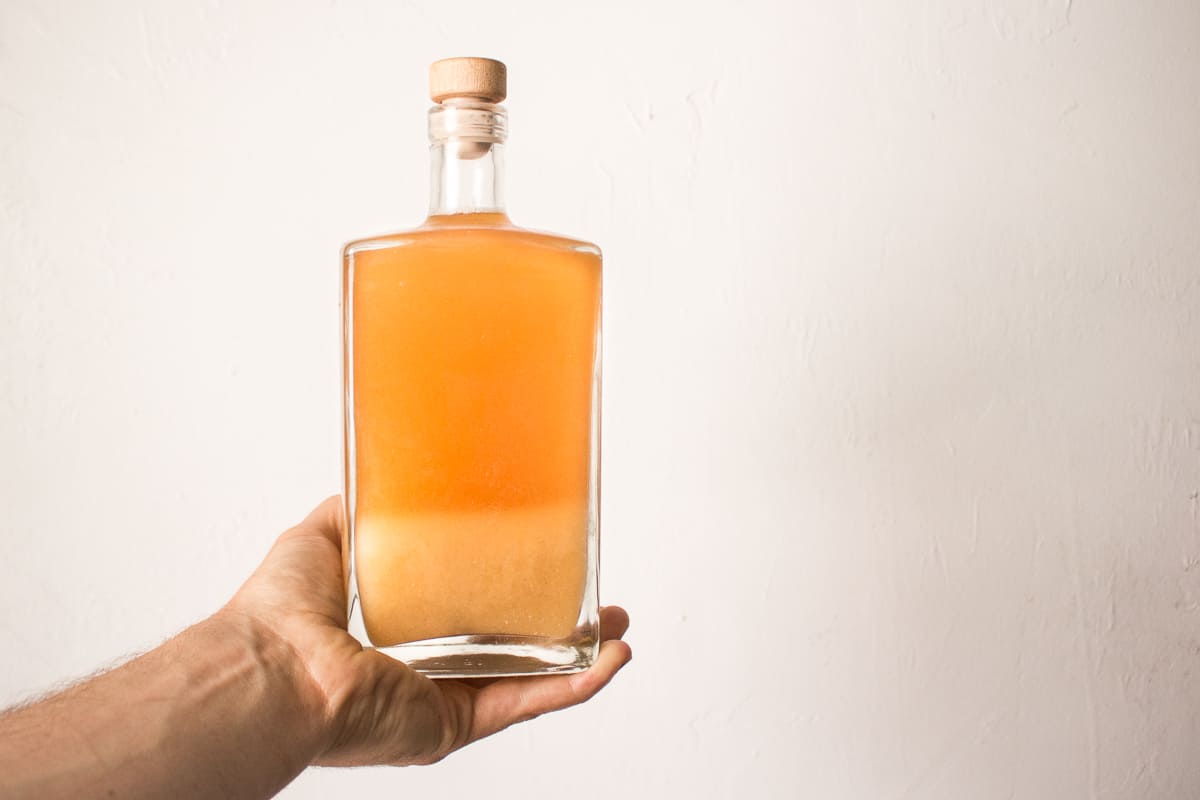
Related Posts
Pheasant Back Fermented Soy Sauce / Shoyu
Ingredients
- 2.2 lbs pheasant back mushrooms this can be trim, excess, scrap, etc
- 200 grams koji rice see note
- 1000 grams filtered water
- 250 grams salt
Instructions
- Cut the mushrooms into pieces, then pulse in a food processor with the koji rice to make a coarse meal. Finally pulse in the salt.
- Transfer the mixture into a non-reactive container such as a glass jar, add the water, mix very well, then press a layer of plastic wrap over the surface and leave out in a cool dry place for at least 30 days. Make sure there's a couple inches between the mushroom mixture and the lid to account for rising during fermentation.
- During the fermentation process, stir as often as you can remember with a clean utensil, replacing the plastic wrap and wiping down any exposed sides or glass with a paper towel doused with vinegar if you start to see mold. If you make this in the spring when it's cool, it will be easier to control mold.
- At first, the mixture will darken on top and oxidize—stir this back in—it’s normal and won’t affect the flavor. As the beneficial bacteria take hold they’ll stem any discoloration, but it will take some time for them to colonize.
- Mold is bad here, and should be removed quickly as it can give off-flavors. That being said, the high amount of salt and vigorous fermentation from the koji give a solid foundation that, once colonized (and it colonizes quickly) should be bulletproof to nasty bacteria. Basically I’m saying this is not a risky ferment—it’s very easy, much safer than aging something like salami, say.
- After the mixture has fermented for 30 days, strain it twice, then, for the clearest result, allow it to drain through a coffee filter. After straining, heat it to simmering to kill the fermentation, bottle and store in the fridge.

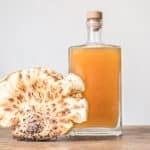
Elayne
I wasn’t confident about this recipe since it took me a long time to get a successful batch of koji rice and my pheasant backs were pretty dry by the time I mixed everything up, but I just tried the end result and it’s amazing! Rich umami flavors with all the delicate honeydew/floral notes of the pheasant back. Unlike anything I’ve ever tried.
Alan Bergo
Thanks Elayne.
Kim
Should the shoyu be heated/boiled/simmered after straining and before bottling?
Alan Bergo
You can certainly do that.
daisy
hey! i don’t normally post on these but i had a lot of fun making my shoyu. 🙂 i think i realized (pretty late) that i strained it before there was a vigorous fermentation. is there a way to retroactively referment?
Alan Bergo
Hi there, kind of. You could add the same amount of Koji and mushrooms back to the liquid and repeat the process. Dont add any more salt though. I haven’t don’t it, but that’s what I would do.
Thomas Jay
Looking forward to trying this. Wondering I used shitake, would the flavour approximate the mushroom garum from Noma?
Alan Bergo
Yes. Shiitakes are cheap, dependable and have a good flavor.
Christy
Is there an alternative to using plastic wrap? I don’t like using plastic materials especially with ferments.
Alan Bergo
Use a blanched leaf of cabbage to weigh things down in a mason jar. Blanched the cabbage in salted water.
Joey
Hi Alan,
I have an off topic question that as far as I know, the koji mold will die at temperatures above 40 degrees Celsius. So why in the process of making amazake as well as miso, koji is fermented at about 60 degrees Celsius?
Alan Bergo
I don't know enough to answer that. I would consult the koji fermentation group on facebook.
Karl R Broberg
Koji isn't alive, it is a source of enzymes. Anything up to ~60ºC is fine, but once you push past that point you'll start to denature the enzymes in the koji. I would imagine that the amazake process is trying to favour activity of certain enzymes, but that is just a educated guess harking back to my chemistry degree modules on enzymatic processes
Alan Bergo
Thanks Karl
Leo Lyons
You mention that the lower temperatures of spring make fermentation easier to control....but temperatures are we talking about here. The room I use for sauerkraut stays around 18-21 degrees. Is that warm enough for a koji ferment?
Joey
Hi Alan,
I have a off topic question that as far as I know, the koji mold will die at temperatures above 40 degrees Celsius. So why in the process of making amazake as well as miso, koji will be fermented at about 60 degrees Celsius ?
Megan
Can you then use the mushroom base as a miso? Is there any food safety issue with not cooking the mushrooms? 🙂
Alan Bergo
The mushroom base has given its gifts to the shoyu, so I would use another fresh batch of mushrooms for miso.
Mary S Goodman
Have you tried this with other mushrooms? I was thinking of giving it a go with hen of the woods or may be a blend.
Alan Bergo
No, but it should work with them.
Mark
Alan, quick Q: I'm about half a week in, and not seeing a "vigorous" ferment, at least not seeing what I would consider a vigorous ferment. If I stir, I see a fine net of bubbles rise to the surface, so it seems something must be happening, but the mushrooms are not "heaving" up from gas building up beneath them at all....
how long does it usually take for the vigorous fermentation to take off?
Thanks,
Mark
Alan Bergo
Mark, as long as there's visible bubbles you should be fine.
Roy
I have a lot of white mold growing on the top. Should I toss?
Andrew Hower
Question!
after a couple days stirring, the mushrooms and rice are expanding and pushing out water overnight
at this point I've lost about a full cup. Is this to be expected? Should I transfer to a gallon jug and top off?
Alan Bergo
Andrew, sounds like you filled the jar to the brim, there will be some rising during the fermentation process so yes it is natural. Take a look at my jar in the picture, note that there is a good amount of space between the mushroom mixture and the top of the jar, this accounts for and prevents liquid leaking out during the process. Don't top it off with water since it will dilute the salt %, if you want to top it off, use the same percentage of salt to total weight of water, mushrooms and rice called for in the recipe. Let me know if that makes sense.
Andrew Hower
I'd say mine was a bit more full, but not a lot (it was just at the shoulder)
I won't top it off, but I'll move it to a larger container =)
Thank you!
Andrew Hower
well I strained it, boiled it, and bottled it
it's cloudier and paler than yours.
I must have done something incorrectly though I'm not sure what
ah well, still a fun experiment
Alan Bergo
Thanks for the feedback Andrew, don't give up on the PB's for condiment purposes-I guarantee you they're worthwhile. Coffee filter will give the clearest result for the finished product, I put in a note about that, although Noma's original one doesn't specify it. I have some PB's on hand so I'll start another batch, with so few ingredients and such a relatively simple process I don't know what might have happened. If you're not digging the flavor (it's much different than mushroom ketchup), try making ketchup with them (omit the soy sauce if you want) that recipe is similar, but only takes two days or so, and is heavily tested by other mushroom hunters. https://foragerchef.com/wild-mushroom-ketchup/
Andrew Hower
I'll try putting it through a coffee filter =)
Pat
How do I know if it worked?
Alan Bergo
Taste it.
Robert Graves
Very cool. I just made a pork stir fry with leftovers and chicken broth and it was totally lacking soy flavor. Life could be far worse though these days. Yeah the exploding bottle thing. I need some airlocks. or balloons.
Alan Bergo
I’ve only had a bottle explode once, and it was from trying to make very small batches of fermented drinks where it’s hard to scale yeast down to say, 1/16 of a teaspoon. It was scary though, and I was prying glass shrapnel out of the fridge and cleaning maple syrup off the inside for hours.
Andrew
out of curiosity, can you recommend a use for the sauce?
Alan Bergo
Good idea, sometimes I forget to do that with some of the funky things on here. I added a few recomendations. It's definitely not as strong tasting as it smells (It smells good).
Andrew
thank you!
Darius
can I use dry dyad's saddles?
Andrew
they are the same mushroom =)
Alan Bergo
No, the farinaceous odor is denatured from dehydrating, and it will probably make a weak tasting product. What you can do is use fresh mushrooms that aren't dryad saddle, like chicken of the woods, oysters, or chanterelles.
Ben Rosen
Hello I have question like you I’m trying Noma Dryad saddle shoyu . I found your recipe online . I’m using pre inoculated koji rice from the package . Am I keeping the KoJi rice dry to mix with the mushrooms, water and salt ? Or should I add water and rice together first
Alan Bergo
Hi Ben, just mix the rice with the mushrooms, pulse in a food processor with the salt, then add the water.